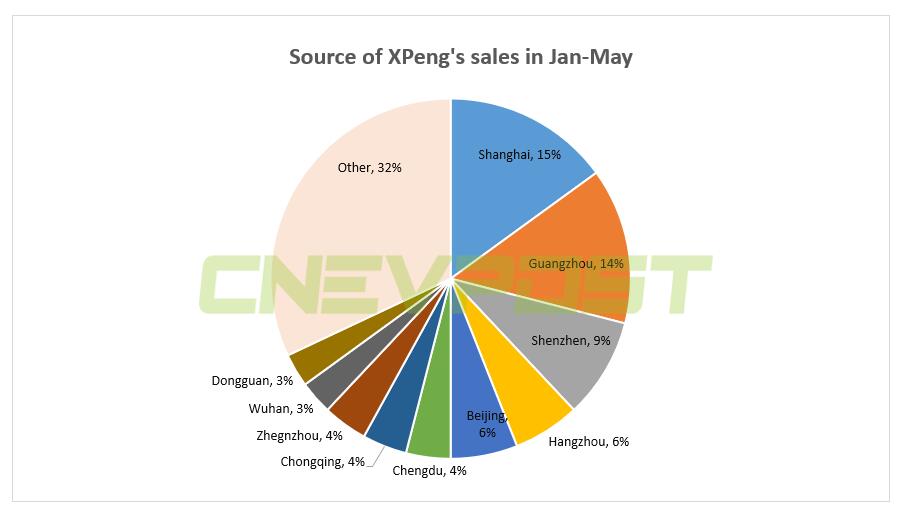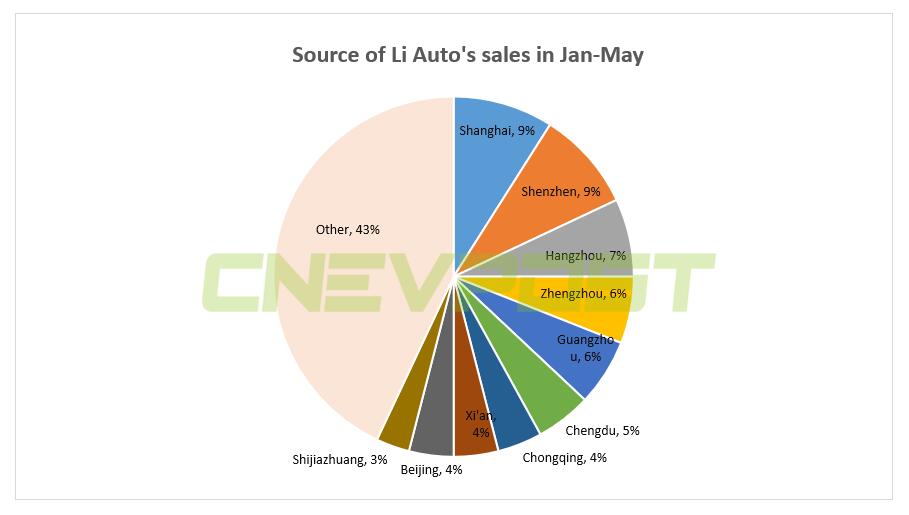With Nio, Xpeng Motors, and Li Auto all reporting strong June deliveries earlier this month, many readers are wondering which cities their consumers are coming from. A recent research report provides the answer.
According to the January-May sales data for these companies aggregated by Ping An Securities based on insurance registerations, the companies' consumers are mainly from China's top-tier cities, but they differ greatly in terms of structure.
For Nio, its consumers are mainly from Shanghai, Beijing, Hangzhou, Guangzhou, Shenzhen, Chengdu, Suzhou, Xi'an, Nanjing, and Wenzhou, which are the cities contributing 66 percent of the total sales.
As the location of Nio's global headquarters, Shanghai is the most important city for Nio, with local consumers contributing 24 percent of its sales in January-May. It is followed by Beijing with 8 percent, Hangzhou with 7 percent, Guangzhou with 5 percent, and Shenzhen with 5 percent.
(Data from Ping An Securities. Graphic by CnEVPost)
For Xpeng, the top 10 cities contributing to its sales are Shanghai, Guangzhou, Shenzhen, Hangzhou, Chengdu, Beijing, Chongqing, Zhengzhou, Wuhan, and Dongguan, accounting for 68 percent of total sales.
Xpeng is headquartered in Guangzhou, but the city contributes only 14 percent to its sales, less than the 15 percent from Shanghai.
Xpeng had 9 percent of its sales in Shenzhen, 6 percent in Beijing, and 6 percent in Hangzhou from January to May.
(Data from Ping An Securities. Graphic by CnEVPost)
Li Auto is headquartered in Beijing, and it is worth noting that the city's contribution to its sales is only 4 percent, even lower than that of Chengdu.
This is because Beijing has a stricter car purchase policy than other cities, and the company's Li ONE, a plug-in hybrid model, cannot use new energy vehicle licenses. And it is currently very difficult to get a license plate for a conventional fuel car in Beijing.
The top 10 cities for Li ONE sales are Shanghai, Shenzhen, Hangzhou, Zhengzhou, Guangzhou, Chengdu, Chongqing, Xi'an, Beijing, and Shijiazhuang, accounting for 57 percent of total sales.
Shanghai and Shenzhen both contributed 9 percent of total sales, Hangzhou 7 percent, Zhengzhou 6 percent, Guangzhou 6 percent, and Chengdu 5 percent.
(Data from Ping An Securities. Graphic by CnEVPost)
The top 10 cities in sales contributed 57 percent of Li ONE sales, compared to nearly 70 percent for both Nio and Xpeng.
Compared to pure electric models, plug-in hybrids are more popular in cities without sales restrictions, and Li Auto has greater potential for sales growth in these cities in the short term, according to Ping An Securities.



